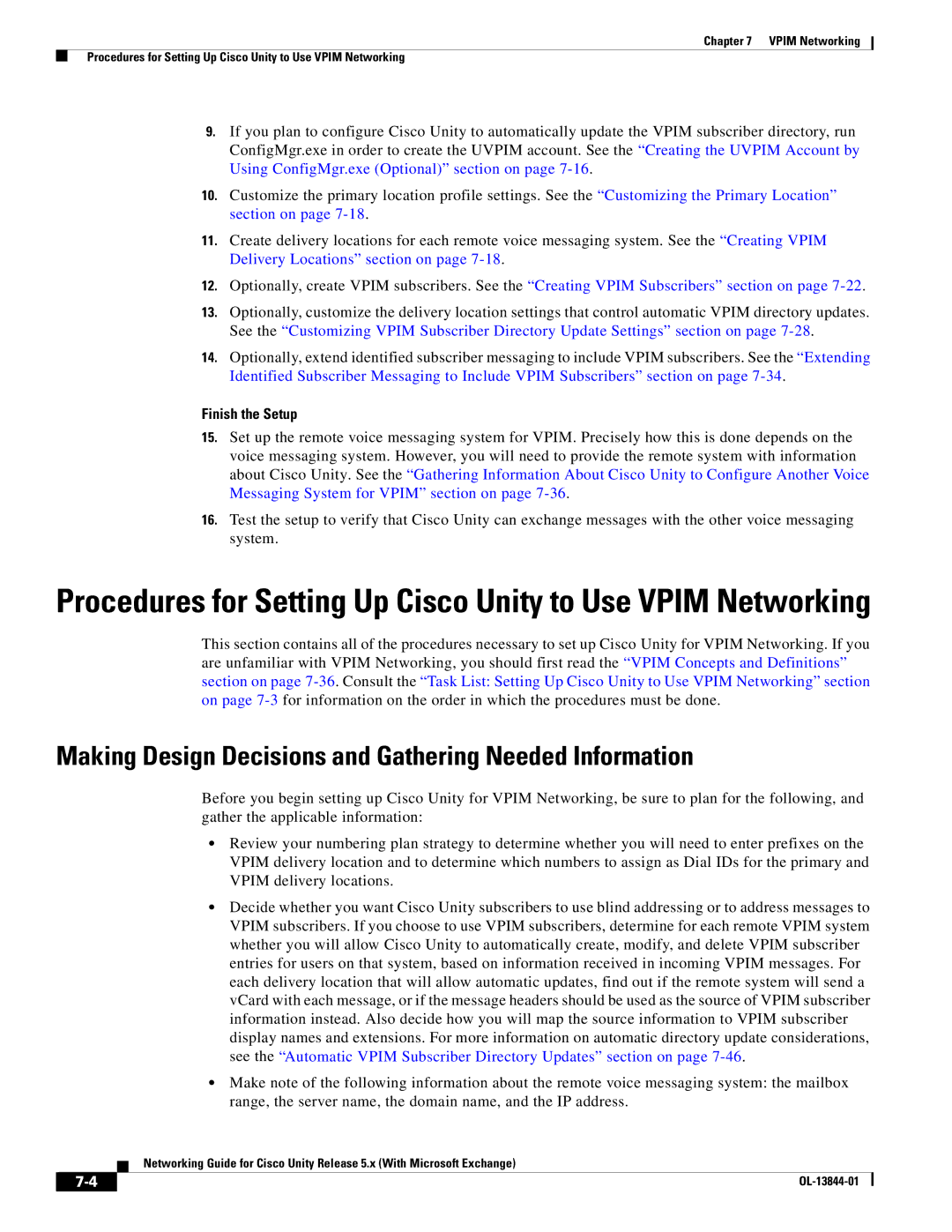
Chapter 7 VPIM Networking
Procedures for Setting Up Cisco Unity to Use VPIM Networking
9.If you plan to configure Cisco Unity to automatically update the VPIM subscriber directory, run ConfigMgr.exe in order to create the UVPIM account. See the “Creating the UVPIM Account by Using ConfigMgr.exe (Optional)” section on page
10.Customize the primary location profile settings. See the “Customizing the Primary Location” section on page
11.Create delivery locations for each remote voice messaging system. See the “Creating VPIM Delivery Locations” section on page
12.Optionally, create VPIM subscribers. See the “Creating VPIM Subscribers” section on page
13.Optionally, customize the delivery location settings that control automatic VPIM directory updates. See the “Customizing VPIM Subscriber Directory Update Settings” section on page
14.Optionally, extend identified subscriber messaging to include VPIM subscribers. See the “Extending Identified Subscriber Messaging to Include VPIM Subscribers” section on page
Finish the Setup
15.Set up the remote voice messaging system for VPIM. Precisely how this is done depends on the voice messaging system. However, you will need to provide the remote system with information about Cisco Unity. See the “Gathering Information About Cisco Unity to Configure Another Voice Messaging System for VPIM” section on page
16.Test the setup to verify that Cisco Unity can exchange messages with the other voice messaging system.
Procedures for Setting Up Cisco Unity to Use VPIM Networking
This section contains all of the procedures necessary to set up Cisco Unity for VPIM Networking. If you are unfamiliar with VPIM Networking, you should first read the “VPIM Concepts and Definitions” section on page
Making Design Decisions and Gathering Needed Information
Before you begin setting up Cisco Unity for VPIM Networking, be sure to plan for the following, and gather the applicable information:
•Review your numbering plan strategy to determine whether you will need to enter prefixes on the VPIM delivery location and to determine which numbers to assign as Dial IDs for the primary and VPIM delivery locations.
•Decide whether you want Cisco Unity subscribers to use blind addressing or to address messages to VPIM subscribers. If you choose to use VPIM subscribers, determine for each remote VPIM system whether you will allow Cisco Unity to automatically create, modify, and delete VPIM subscriber entries for users on that system, based on information received in incoming VPIM messages. For each delivery location that will allow automatic updates, find out if the remote system will send a vCard with each message, or if the message headers should be used as the source of VPIM subscriber information instead. Also decide how you will map the source information to VPIM subscriber display names and extensions. For more information on automatic directory update considerations, see the “Automatic VPIM Subscriber Directory Updates” section on page
•Make note of the following information about the remote voice messaging system: the mailbox range, the server name, the domain name, and the IP address.
Networking Guide for Cisco Unity Release 5.x (With Microsoft Exchange)
|
| |
|
